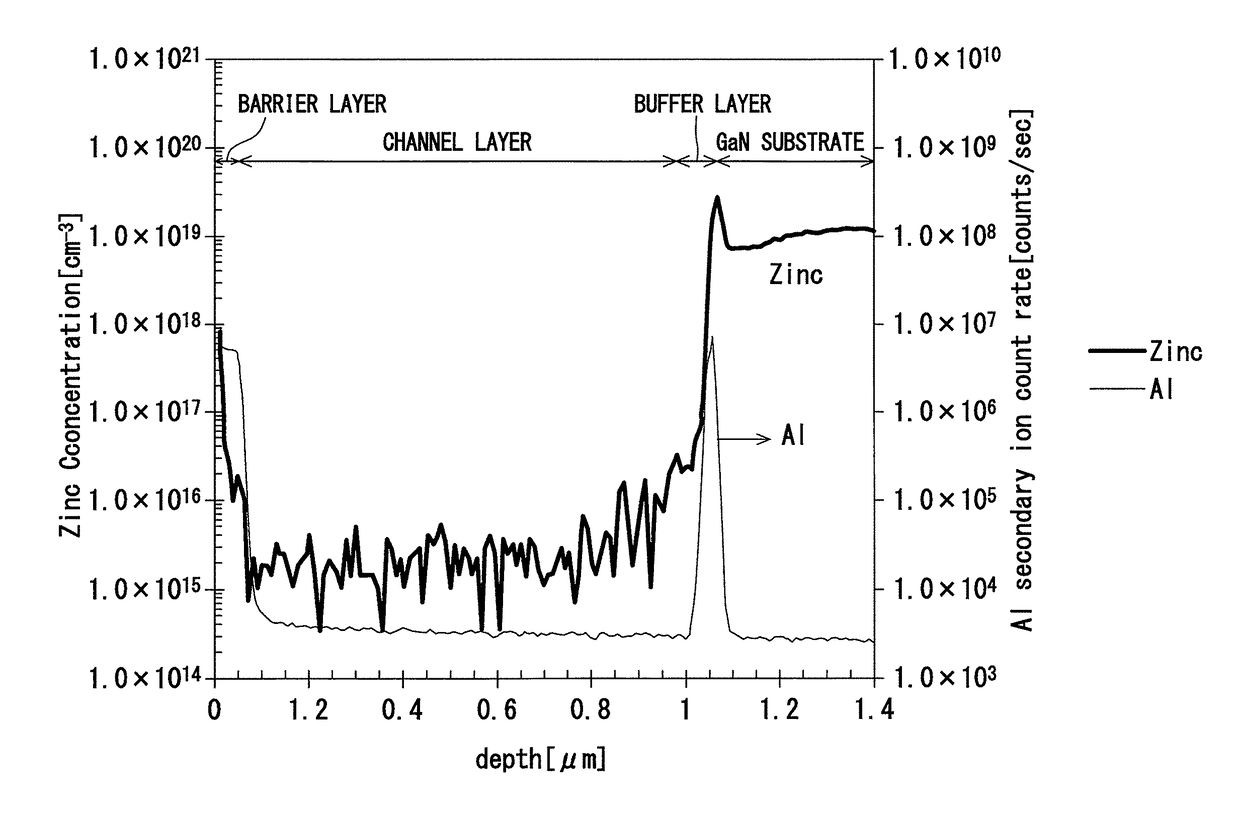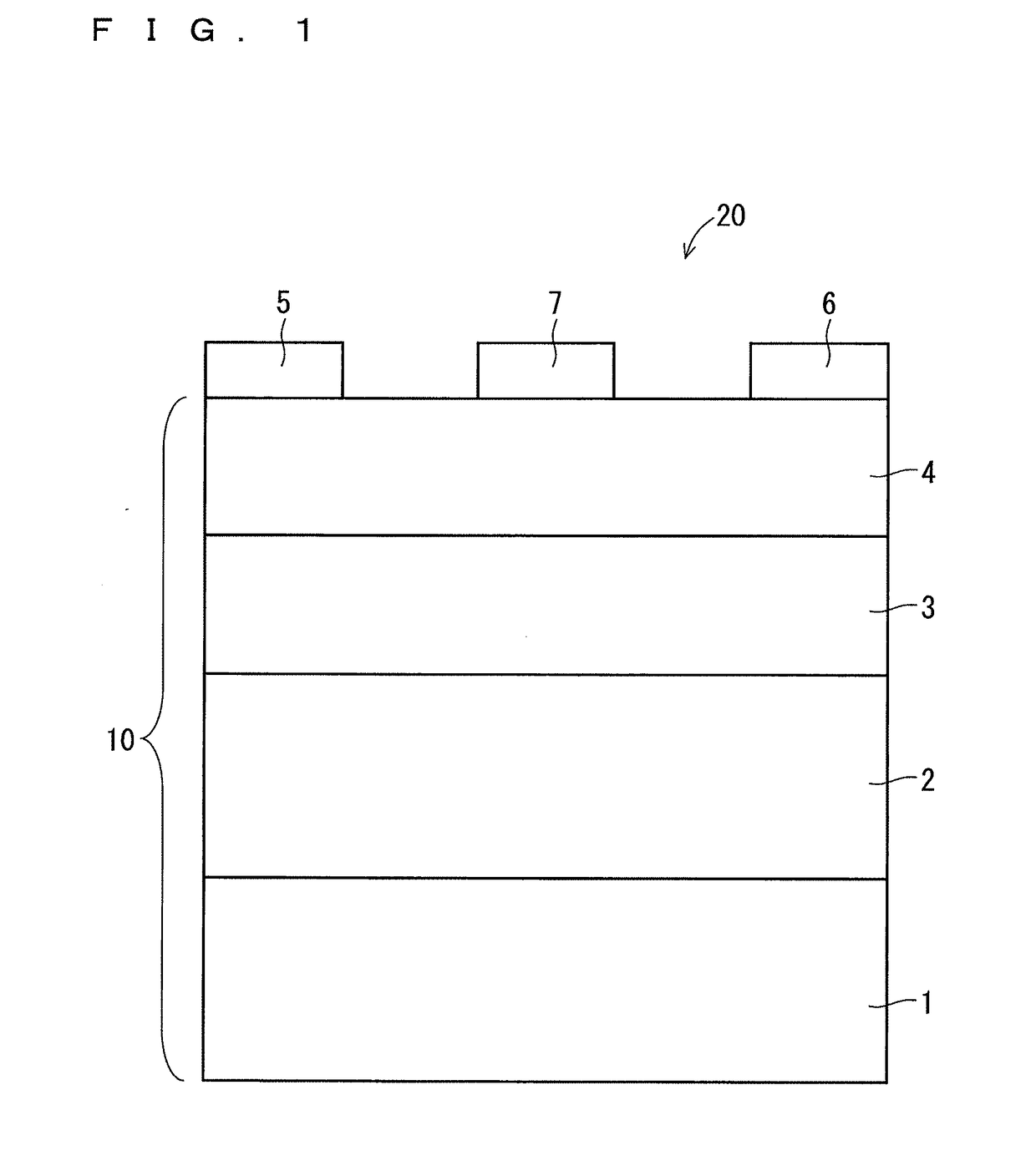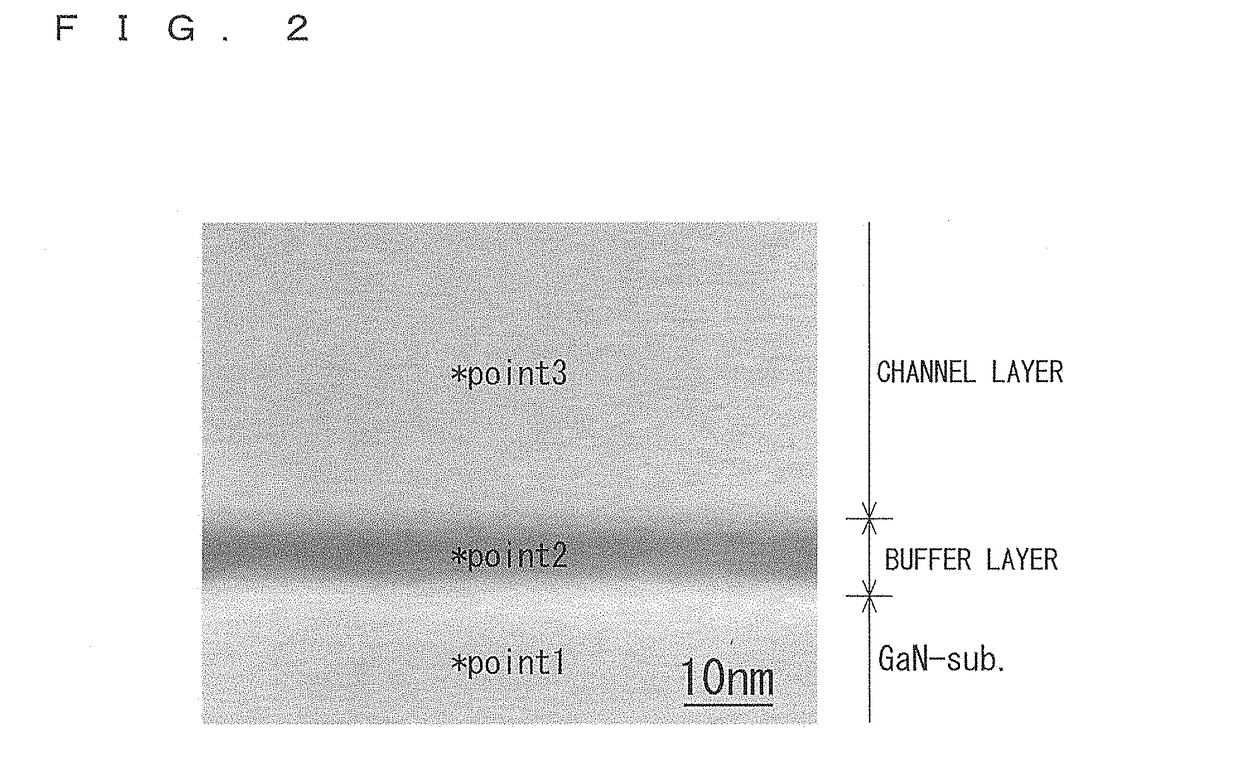Epitaxial substrate for semiconductor elements, semiconductor element, and manufacturing method for epitaxial substrates for semiconductor elements
- Summary
- Abstract
- Description
- Claims
- Application Information
AI Technical Summary
Benefits of technology
Problems solved by technology
Method used
Image
Examples
experimental example 1
[0097]After the Zn-doped GaN single crystal free-standing substrate was manufactured, seven types of epitaxial substrates were manufactured, using the free-standing substrate as a base substrate, under the same condition except that a thickness of the buffer layer was varied. Furthermore, the HEMT element was manufactured using each epitaxial substrate. In the following, common Samples No. 1-1 to No. 1-7 are used for the seven types of epitaxial substrates and the HEMT elements manufactured using each of the epitaxial substrates.
[0098](Manufacture of Zn-Doped GaN Single Crystal Substrate by Flux Method)
[0099]A GaN low-temperature buffer layer is formed to have a thickness of 30 nm at a temperature of 550° C. on a surface of a c-plane sapphire substrate having a diameter of 2 inches and a thickness of 0.43 mm, and subsequently, a GaN thin film having a thickness of 3 μm is formed by the MOCVD method at a temperature of 1050° C., thereby obtaining a MOCVD-GaN template usable as a seed...
experimental example 2
[0159]After the Zn-doped GaN single crystal free-standing substrate was manufactured under the conditions of manufacture and the procedures similar to those in the Experimental Example 1, four types of epitaxial substrates were manufactured using the free-standing substrate as a base substrate. The conditions of manufacture in the above case were the same as that in the Experimental Example 1 except that the gas ratio of Al source gas to group 13 source gas in the formation of the AlGaN buffer layer was varied to vary the Al molar ratio p in the buffer layer. More specifically, the gas ratio of Al source gas to group 13 source gas in the formation of the buffer layer was varied at four levels of 1.0, 0.9, 0.7, and 0.5. A thickness of the buffer layer was set to 10 nm.
[0160]Since the conditions of manufacture of the Zn-doped GaN substrate are the same as that in the Experimental Example 1, a dislocation density thereof is estimated to be substantially the same as Sample No. 1-4.
[0161...
experimental example 3
[0167]After the Zn-doped GaN single crystal free-standing substrate was manufactured by the procedures similar to those in the Experimental Example 1, three types of epitaxial substrates were manufactured using the free-standing substrate as a base substrate, and the HEMT elements were manufactured using each epitaxial substrate.
[0168]However, in manufacturing each Zn-doped GaN single crystal free-standing substrate, a growth time was varied in forming the GaN single crystal layer by the flux method so that the thickness of the GaN single crystal layer formed on the surface of the MOCVD-GaN template was varied. This is intended to obtain the Zn-doped GaN single crystal free-standing substrates having the different dislocation densities. More specifically, the thickness of the GaN single crystal layer was varied at three levels of 1000 pm, 600 pm, and 200 pm by varying a heat-holding time of keeping a heating temperature at 850° C. to three levels of 100 hours, 70 hours, and 40 hours...
PUM
| Property | Measurement | Unit |
|---|---|---|
| Temperature | aaaaa | aaaaa |
| Temperature | aaaaa | aaaaa |
| Temperature | aaaaa | aaaaa |
Abstract
Description
Claims
Application Information
 Login to View More
Login to View More - R&D
- Intellectual Property
- Life Sciences
- Materials
- Tech Scout
- Unparalleled Data Quality
- Higher Quality Content
- 60% Fewer Hallucinations
Browse by: Latest US Patents, China's latest patents, Technical Efficacy Thesaurus, Application Domain, Technology Topic, Popular Technical Reports.
© 2025 PatSnap. All rights reserved.Legal|Privacy policy|Modern Slavery Act Transparency Statement|Sitemap|About US| Contact US: help@patsnap.com



